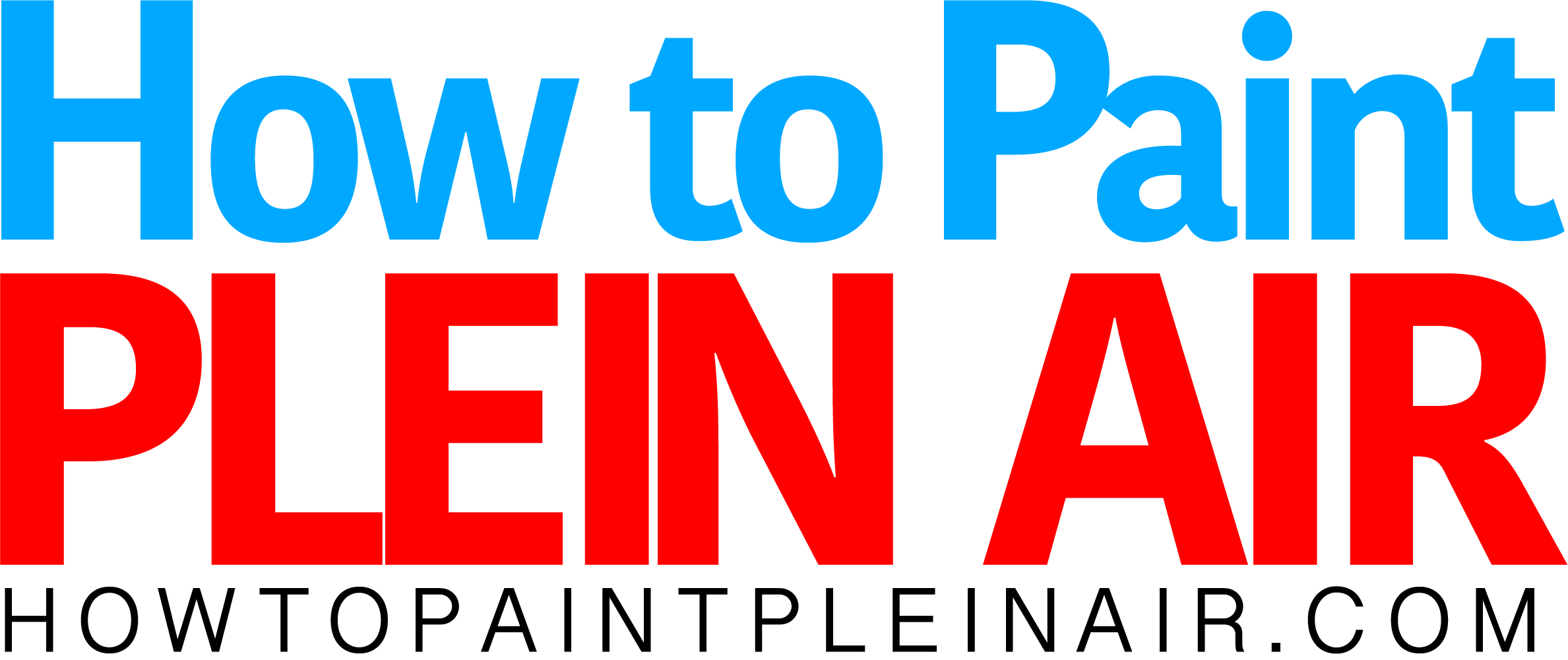What Plein Air is Not
It can be said, reasonably so, that the core characteristic, the primary feature, the essential genetic map of plein air painting is painting the outdoors outdoors. It has been said, and unreasonably so, that a painter may take a photo of an outdoor scene then retire to the comfort of his studio, NPR on the radio, little electric heater, and maybe a glass of wine, and from there he may paint from the photo and be allowed to call the result “plein air”.
Some of you hard experienced artists will, at this point, be screaming “No!”, while others will see the comfortable reasonableness of this very convenient notion. Why brave the weather? To those who have a screaming no in their head at the disturbing notion of painting plein air in the comfort of a studio or, for that matter, inside a convention hall on a stage under artificial light, the following is dedicated.
Even if we leave the window of our studio open wide on a stormy day we can not experience plein air painting while in the studio.
As clear-cut as this definition is, plein air painting is painting the outdoors outdoors, you experienced artists understand that the definition leaves out so many corollaries, connotations and complexities that we feel unduly rushed to offer a counter-argument. It would be an argument born of the reality of the artist rooted to a single spot outdoors for hours while wind, weather, wild animals, and tourists barrage our effort to paint what is before us. Even if we leave the window of our studio open wide on a stormy day we can not experience plein air painting while in the studio.
[bctt tweet=”Plein air is not about being comfortable.” username=”zentemple”]
Perhaps that is one of the corollaries, that plein air painting is an experience, and an experience dearly paid for in sweat and, sometimes, even blood and tears. Who has not finished a masterpiece, turned his back for a minute only to hear the crashing of the easel as the wind does what it blindly does when it sees a sail, or any kind of canvas? (Note to self: a canvas is a sail. Never turn your back.) On the other hand, sometimes the wind does you a favor. The experience of plein air is like any experience, it is something that happens that you can remember, think, and talk about…and use or benefit from the next time out.
Not everything is an experience, however. Take for example, your own death, something that some artists contemplate when painting. You cannot remember your own death, nor can you think about it, nor talk about it after the fact. (There are those who will argue with this, but for now bear with this argument.) Painting in the studio is an experience. Painting plein air is an experience. Both are experiences, and yet different, one from the other. Though it could be argued correctly that each plein air experience is unique and so is each studio experience and so what would be the difference if every experience is unique? Does this make studio painting the same as plein air painting? In many ways yes, except that in the studio, or the convention hall, you are indoors. Indoors. Not outdoors. But we’ve settled that part and now we are talking about the experience.
Painting in the studio is an experience. Painting plein air is an experience. Both are experiences and one is not the other.
The studio is not the outdoors. Any plein air painter with any kind of experience knows that this is true beyond exception. Perhaps there is one exception: you have a very shabby and dangerous studio, a studio that has no windows, one that has holes in the roof right above your easel with a clear view of the sky, has no heating, no electricity, has animals and insects sneaking around, and, very importantly, has tourists saying things like “My mother used be a painter, too.” or, worse yet, “You look sooooo peaceful painting.” (a question which seems calculated to raise your hackles) or the classic “What are you painting?” (always asked when you are clearly painting a tree, in fact the only tree in sight), unless your studio is has all of these things then you can not claim plein air.
If, and only if, you have a studio where all of the above apply then you may be granted a special dispensation to be allowed to say that, indeed, the painting you finished in your studio is a plein air painting. Why? Because you deserve it.
Plein air is not for the faint of heart, that’s really why. Plein air is all bugs and sun and brushes dropping and interruption and the sun not staying put and the wind coming up and deer, foxes, birds, tired legs, sunburned arms, sweaty heads, and doubt. And that is just the base line. On top of that base line you have to focus the mind, make quick decisions, see clearly the composition, the colors, what to leave in, and what to take out. You have to judge your energy and pace yourself, visualize the end of the work before you, work tirelessly and know when to stop or know when to give up and try another day.
Plein air is not about being comfortable. If you want to be comfortable today and you don’t feel like anything but hot coffee, radio on, electric heater going, big canvas on an easel, no jacket needed, and a cushy chair to rest or even nap in, then stay where you are…the studio. It’s good to stay in the studio and it is alright to work from that photo of the scene with the single tree or the chili can, but be honest to yourself and to others. You are not painting plein air when you are in the studio. Plein air painters earn, say it again, earn the right to claim a painting as painted plein air.










